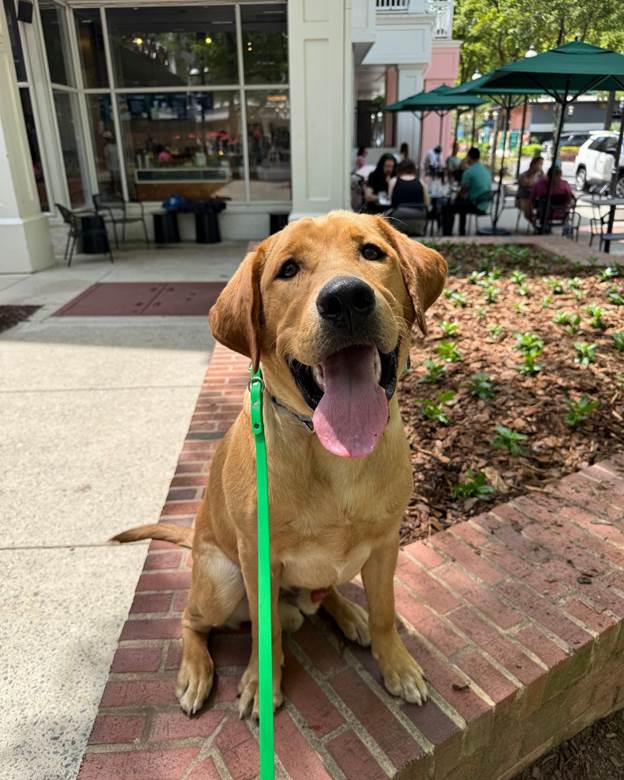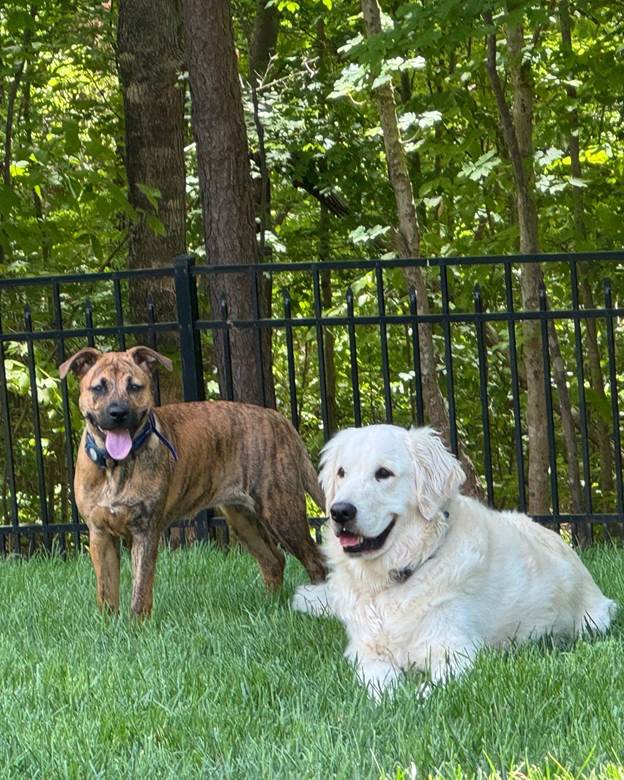The doorbell rings. Your heart sinks just a little, not from annoyance at the visitor, but in anticipation of the chaotic greeting to come. An overeager dog, paws on your guest’s clean clothes, is a common scene—but it doesn’t have to be your reality. A well-trained dog is a testament to a strong owner-dog relationship, and mastering a few key cues can transform your home life. To address jumping, the solution is a clear, consistent, and positive approach to teach your dog the ‘off’ command.
This guide moves beyond simple commands to build a framework of mutual respect between you and your dog. We will show you how to effectively stop unwanted jumping on people, furniture, and counters using relationship-based methods. By understanding the ‘why’ behind the jump and applying precise, positive techniques, you can cultivate polite greetings and a more harmonious household.
Table of Contents
- Understanding the ‘Off’ Command
- The Psychology of Jumping: Why Your Dog Does It
- Getting Started: Your Training Toolkit
- How to Teach a Dog the ‘Off’ Command: A 5-Step Guide
- Proofing the ‘Off’ Command for True Reliability
- Troubleshooting Common Training Problems
- The Critical Role of Consistency
- Frequently Asked Questions
Understanding the ‘Off’ Command
What is the ‘off’ command? It is a specific cue that means “all four paws on the floor.” It is not the same as ‘down’ (which means lie down) or ‘leave it’ (which means do not touch an item). The ‘off’ command is your tool for managing vertical space, whether your dog is jumping on a person, the sofa, or the kitchen counter.
Why is it so important?
- Safety: An enthusiastic 80-pound dog jumping on a child or an elderly guest can be dangerous. A reliable ‘off’ command prevents accidents.
- Respect for Others: Polite greetings make your dog a welcome presence in any situation, improving their social life and yours.
- Household Harmony: It establishes clear boundaries about furniture and personal space, reducing daily friction.
The Psychology of Jumping: Why Your Dog Does It
To effectively correct a behavior, we must first understand its origin. Dogs rarely jump to assert dominance; this is a common myth. The reality is rooted in their natural communication style. According to insights from Rover.com, dogs often jump to get closer to our faces, which is how canines greet each other. It’s an act of affection and excitement, not defiance.
In fact, research shows that over 50% of dogs jump on people as a form of greeting. They do it because it has worked in the past—they get attention, even if it’s negative attention like being pushed down or yelled at. Our goal is to teach them a more appropriate way to ask for that same attention. By understanding their intent, we can approach training with empathy, strengthening our bond rather than punishing a natural instinct.
Getting Started: Your Training Toolkit
Effective training begins with preparation. Set yourself and your dog up for success by gathering a few simple items.
- High-Value Treats: Small, soft, and extra-tasty treats that your dog loves. This is not the time for dry biscuits.
- A Clicker (Optional): A clicker is a tool used to “mark” the exact moment your dog performs the correct action. It provides clear, instantaneous feedback. If you prefer not to use a clicker, a sharp, happy verbal marker like “Yes!” works just as well.
- A Non-Distracting Environment: Begin your training sessions in a quiet room inside your home where your dog feels comfortable and can focus on you.
How to Teach a Dog the ‘Off’ Command: A 5-Step Guide
Our approach is built on positive reinforcement dog training. A foundational study on dog training methods confirms that this approach is more effective and less likely to cause anxiety or aggression than punishment-based techniques. We are rewarding the behavior we want to see, making it more likely to be repeated.
Step 1: The Lure
- Start with your dog on a slightly elevated, yet permitted, surface like a sturdy footstool or a single stair.
- Hold a high-value treat in your hand. Let your dog sniff it, then slowly lure their nose—and thus their body—down and away from the surface. The moment all four paws touch the floor, proceed to the next step.
Step 2: Marking the Behavior
- As soon as your dog’s paws hit the ground, “mark” the action with a crisp click from your clicker or a clear “Yes!”
Step 3: The Reward
- Immediately after marking the behavior, give your dog the treat. This sequence—action, mark, reward—creates a powerful learning association.
Step 4: Adding the Verbal Cue
- Once your dog is reliably following the lure to the floor, it’s time to add the cue. As you begin the luring motion, say “Off” in a clear, upbeat tone.
- Repeat the sequence: Say “Off,” lure them down, mark the moment their paws land, and reward.
Step 5: Fading the Lure and Practicing
- After several successful repetitions, begin to use the hand motion without a treat in it. When your dog responds, reward them with a treat from your other hand.
- Gradually, make the hand signal smaller and rely more on the verbal “Off” cue. Keep training sessions short (5-10 minutes) and positive.
Proofing the ‘Off’ Command for True Reliability
A command isn’t truly learned until it works everywhere, every time. This process is called “proofing” or “generalizing.” This is where many owners fall short, but it’s the key to real-world success. Advance through these levels systematically.
Level 1: Different Surfaces
- Practice the ‘off’ command on various pieces of furniture your dog is allowed on (if any).
- Use it for counters (management is also key here—don’t leave tempting items out).
- Practice on different flooring types.
Level 2: Different People
- Start with family members your dog knows well. Have them practice the same luring and rewarding technique.
- Graduate to calm, trusted friends during quiet visits. For expert guidance on these crucial interactions, our In-Home Private Training Sessions are invaluable.
Level 3: Different Environments
- Move the training to other rooms in the house.
- Practice in the backyard on a leash.
- Try it in the front yard with low-level distractions.
Level 4: Adding Distractions
- Practice while another person is walking around the room.
- Introduce a toy on the floor as a mild distraction.
- Work up to the ultimate test: when guests arrive. Keep your dog on a leash initially for management. As your guest enters, ask your dog for an ‘off’ (if they jump) or a ‘sit’ (to prevent it), and reward heavily for calm behavior.
Troubleshooting Common Training Problems
If you hit a roadblock, don’t get discouraged. Here are solutions to common challenges.
“My dog only listens when I have a treat.”
This means you haven’t fully faded the lure. Practice rewarding from your other hand or pocket, so the treat isn’t the signal. Also, introduce other rewards like praise or a favorite toy.
“My dog jumps right back up.”
You might be rewarding too quickly. After you mark the “off,” ask for a brief ‘sit’ before delivering the treat. This teaches your dog that calm, four-on-the-floor behavior is what earns the reward.
“My dog gets too excited and won’t listen.”
The situation is too challenging for their current training level. Go back a step to a calmer environment and build up more slowly. For dogs with high arousal, our Jumpstart + Board and Train Program can help build a solid foundation
The Critical Role of Consistency
Training is a team sport. According to The Spruce Pets, inconsistency is a primary reason commands fail. Everyone in your household must use the same cue (“Off”) and the same rules. If one person allows jumping while another forbids it, your dog will receive mixed signals and remain confused.
Have a family meeting to explain the new rule: Polite greetings are rewarded, jumping is ignored. When guests visit, politely inform them of your training. Ask them to turn away and ignore your dog if they jump, then give attention only when all four paws are on the floor.
Conclusion
Mastering the ‘off’ command is about more than stopping a nuisance behavior; it’s about clear communication and deepening the respect between you and your dog. By using these positive, relationship-focused methods, you preserve your dog’s unique personality while guiding them toward polite and safe behavior.
A calm, well-behaved companion is within your reach. If you’re in the Charlotte area and want to accelerate your progress with professional guidance, our team is here to help. Schedule your Free In-Home Consultation today to start building a more harmonious relationship with your dog.
Frequently Asked Questions (FAQs)
What’s the difference between ‘off’ and ‘leave it’?
‘Off’ is used to get your dog to remove their paws from something they are already on, like a person or a couch. ‘Leave it’ is a preventative command used to tell your dog not to touch or pick up an item in the first place, like food on the floor or a stranger’s bag.
How long does it take to teach the ‘off’ command?
A dog can learn the basic action in just a few short sessions. However, “proofing” the command so it’s reliable in many different situations with distractions can take several weeks or months of consistent practice. Patience is key.
Can I teach an older dog the ‘off’ command?
Absolutely. Dogs of any age can learn new behaviors. An older dog may have a more ingrained habit of jumping, so it may require more patience and consistency, but the positive reinforcement method is highly effective for dogs of all ages. For complex cases, our Auto-Pilot Program offers a comprehensive solution.



